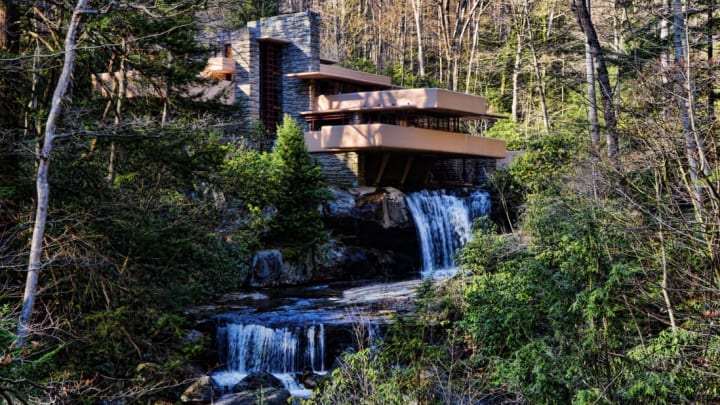The UNESCO World Heritage Center recognizes sites of great cultural, historical, or scientific importance, from manmade cities like Venice to natural wonders like the Great Barrier Reef. A group of new locations honored this month aren't nearly as old as some other sites on the list, but in just the past century or so, they've made a huge impact. During its 43rd annual session, the World Heritage Committee elected to add eight buildings designed by Frank Lloyd Wright, the American architect who pioneered the Prairie School movement in the 20th century.
The Frank Lloyd Wright structures joining the UNESCO list include Taliesin West in Scottsdale, Arizona; Hollyhock House in Los Angeles; the Frederick C. Robie House in Chicago; Unity Temple in Oak Park, Illinois; the Solomon R. Guggenheim Museum in New York City; Fallingwater in Mill Run, Pennsylvania; the Herbert and Katherine Jacobs House in Madison, Wisconsin; and Taliesin in Spring Green, Wisconsin. Each building was constructed between 1905 and 1938, and they represent just a handful of the more than 400 Wright works still standing today.
The group makes up a single World Heritage Site known as "The 20th-Century Architecture of Frank Lloyd Wright." Together, the buildings are the 24th World Heritage Site recognized in the U.S., accompanying such places as Independence Hall in Philadelphia, Everglades National Park in Florida, and the Grand Canyon in Arizona. They're not the first example of modern architecture to be added to the list, though. The Sydney Opera House, the city of Brasilia, and the Bauhaus School in Germany are also World Heritage Sites.
According to organization's website, adding landmarks to the UNESCO World Heritage list "helps raise awareness among citizens and governments for heritage preservation," and that "greater awareness leads to a general rise in the level of the protection and conservation given to heritage properties." Countries that house heritage sites are also eligible for funding from UNESCO to preserve them. All of the sites included "The 20th-Century Architecture of Frank Lloyd Wright" are already protected as National Historic Landmarks, and many are open to visitors.
